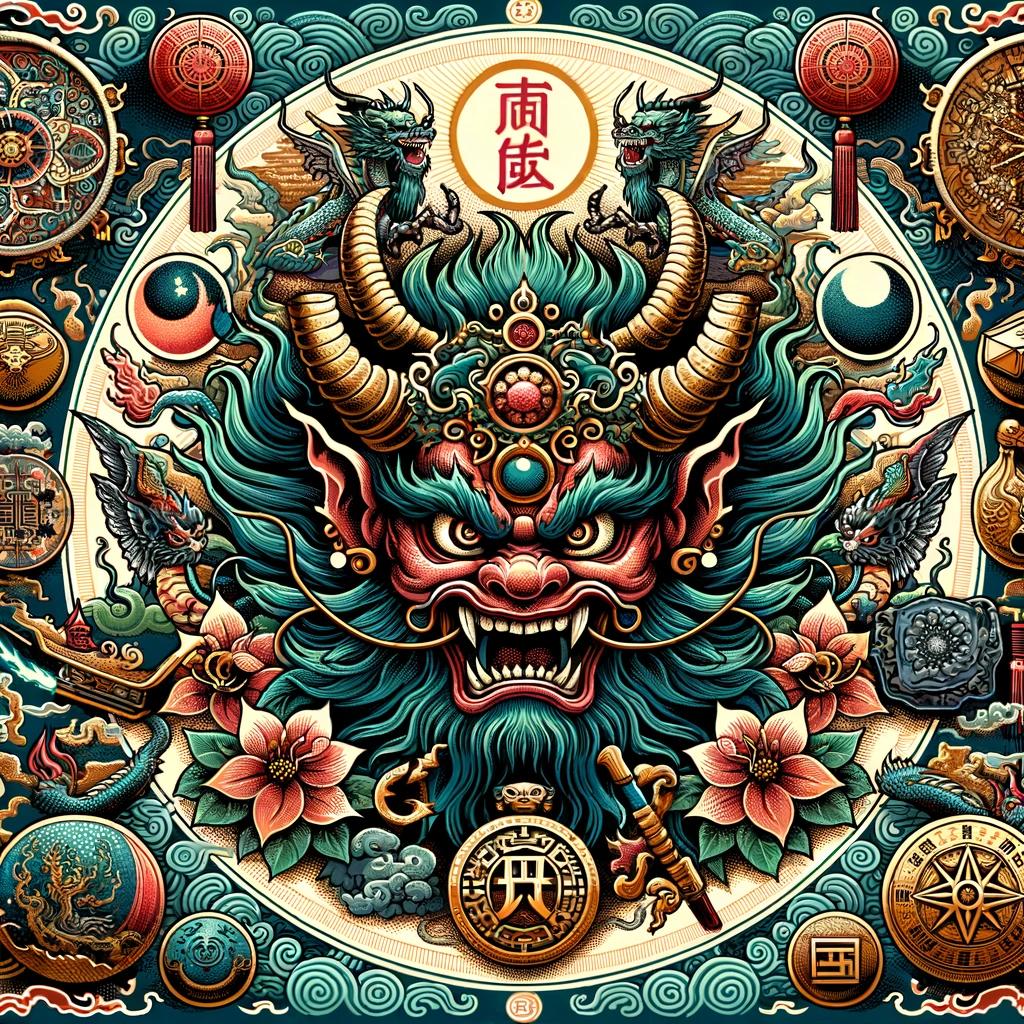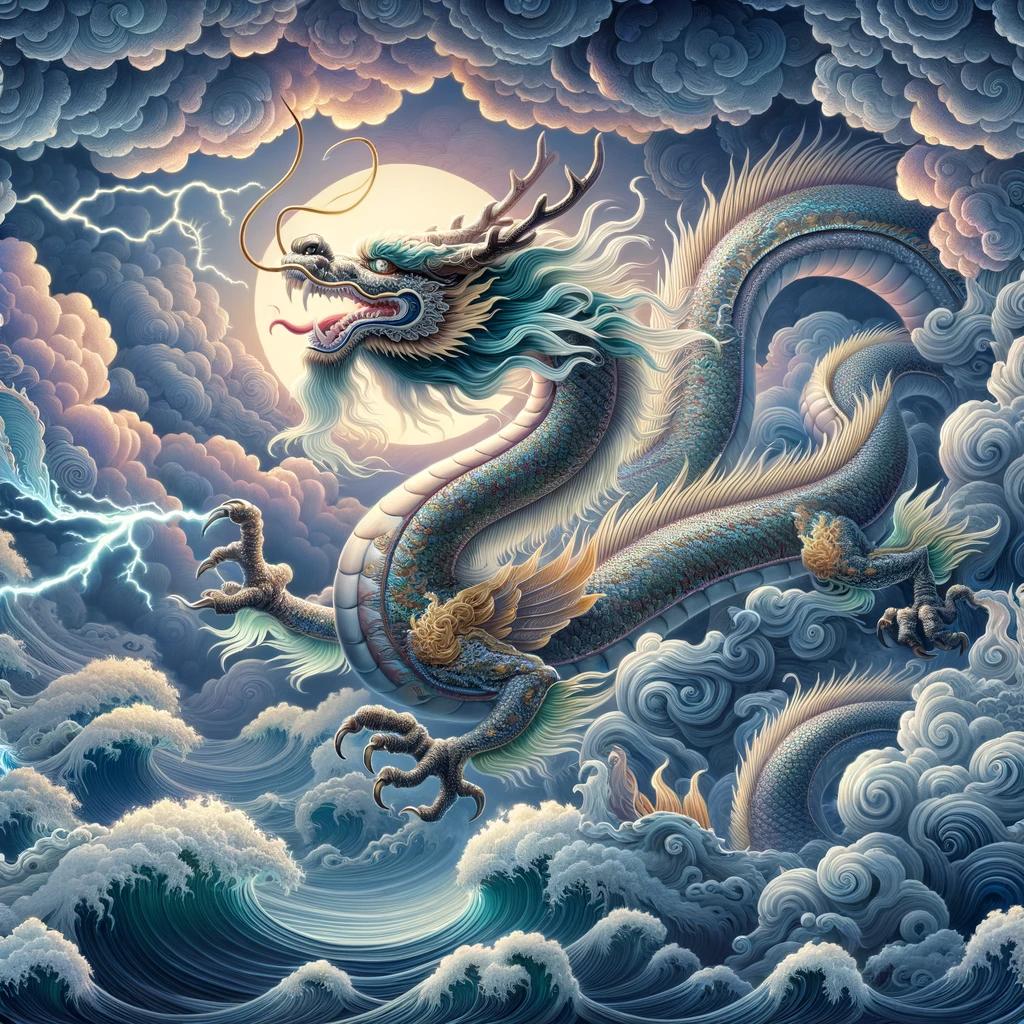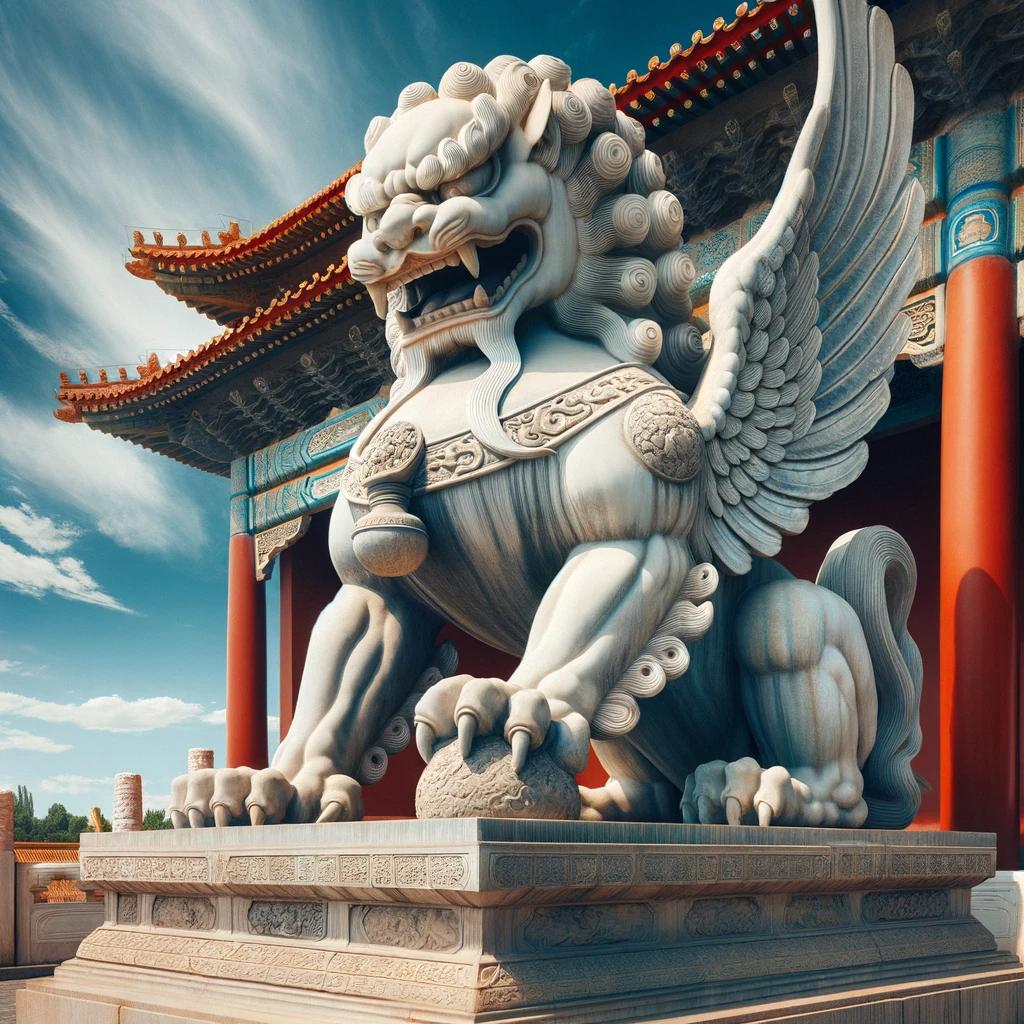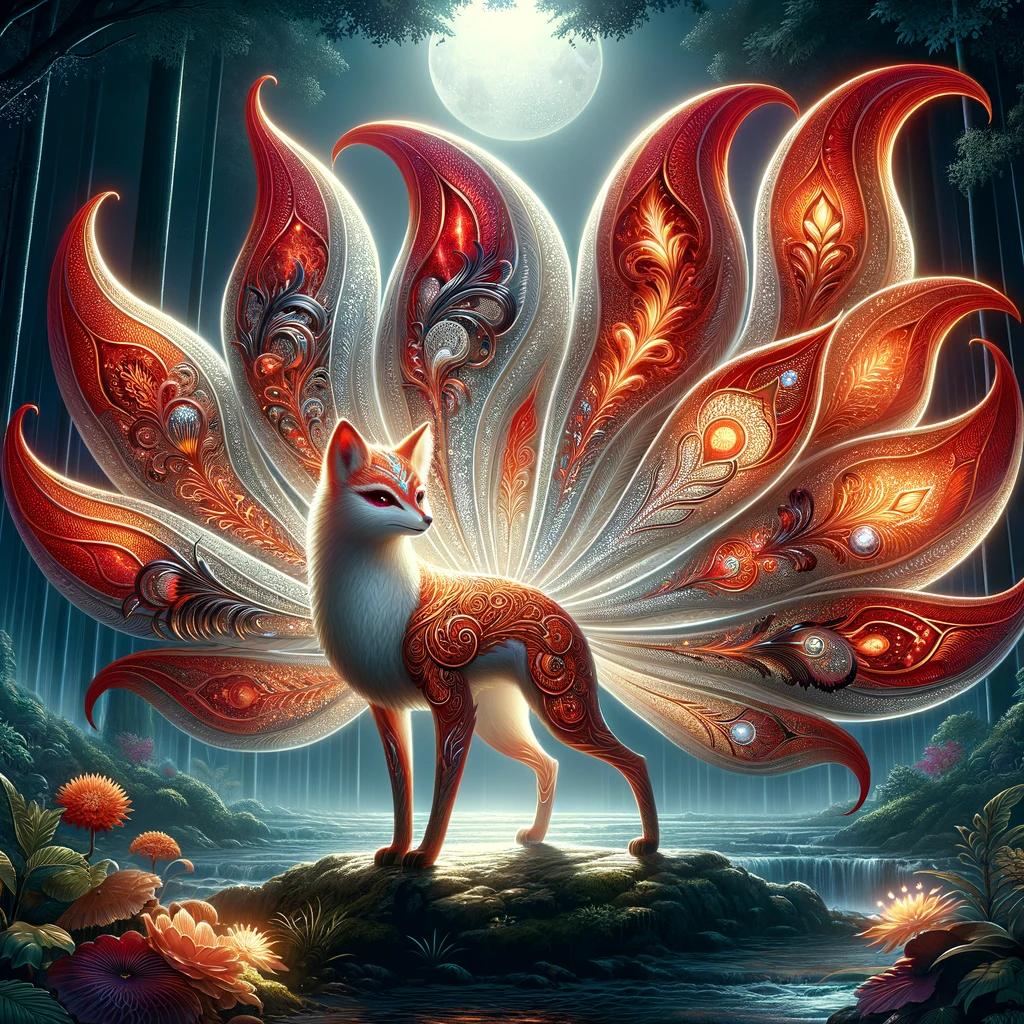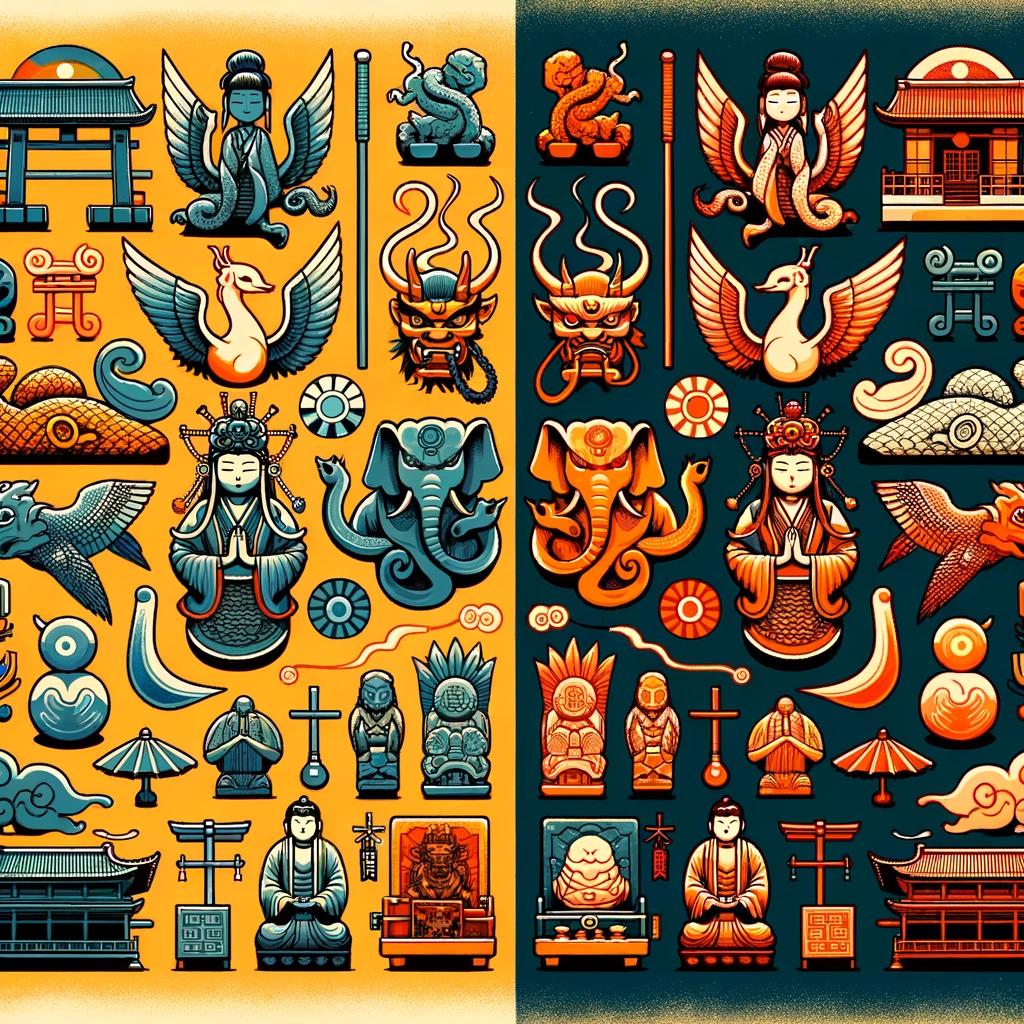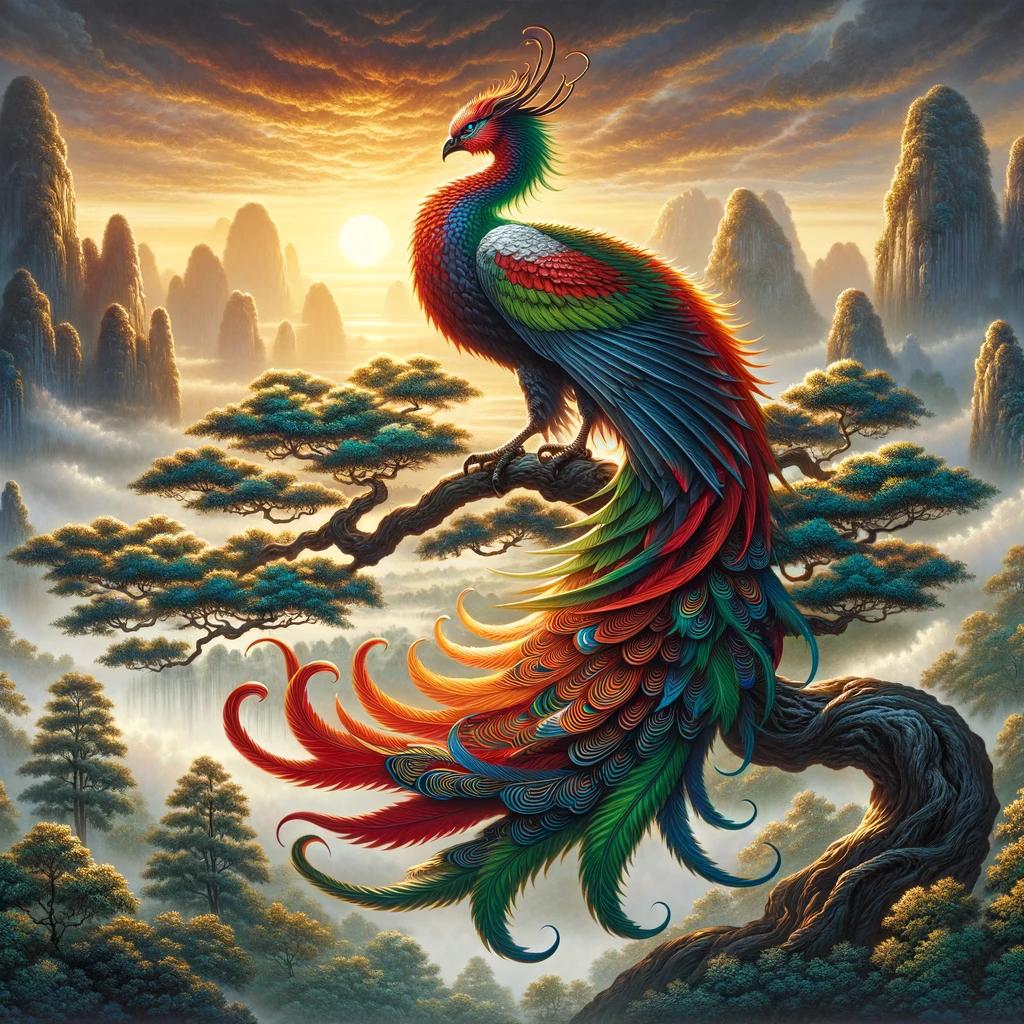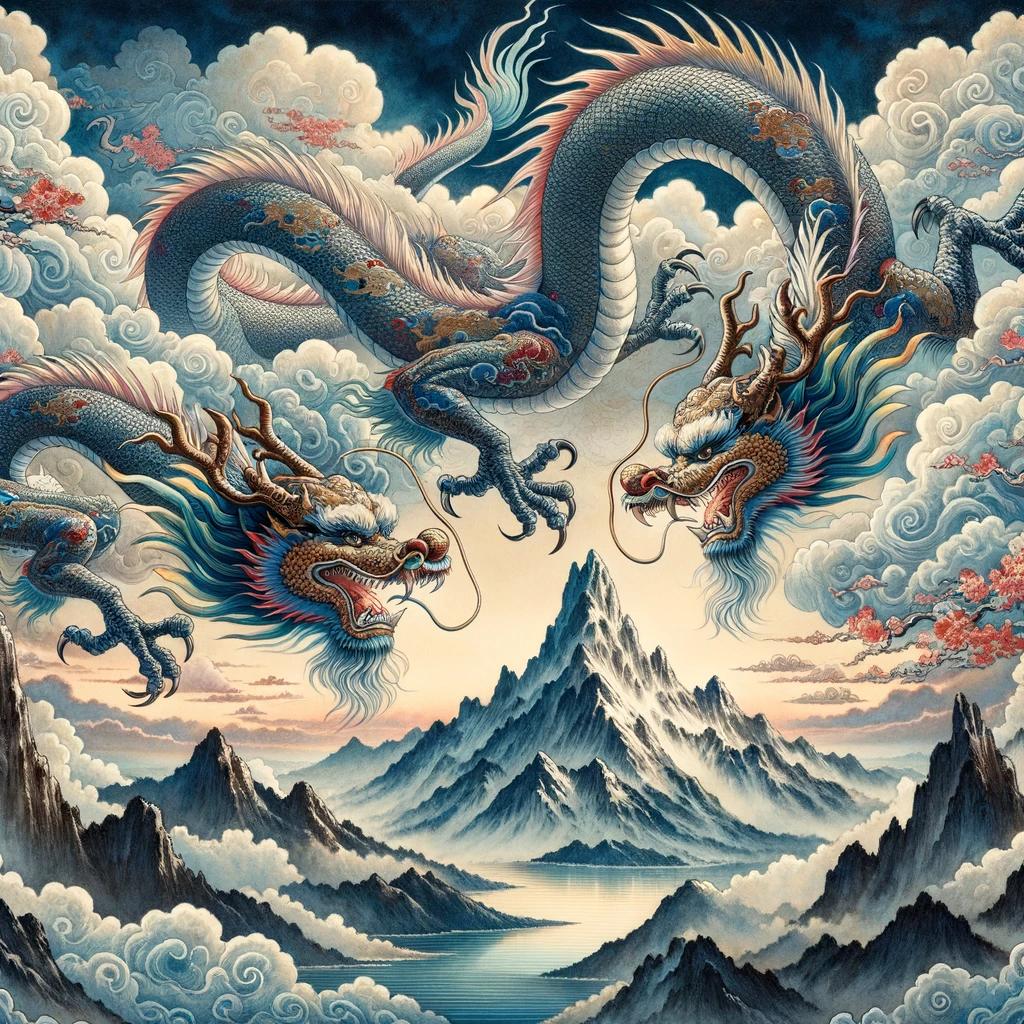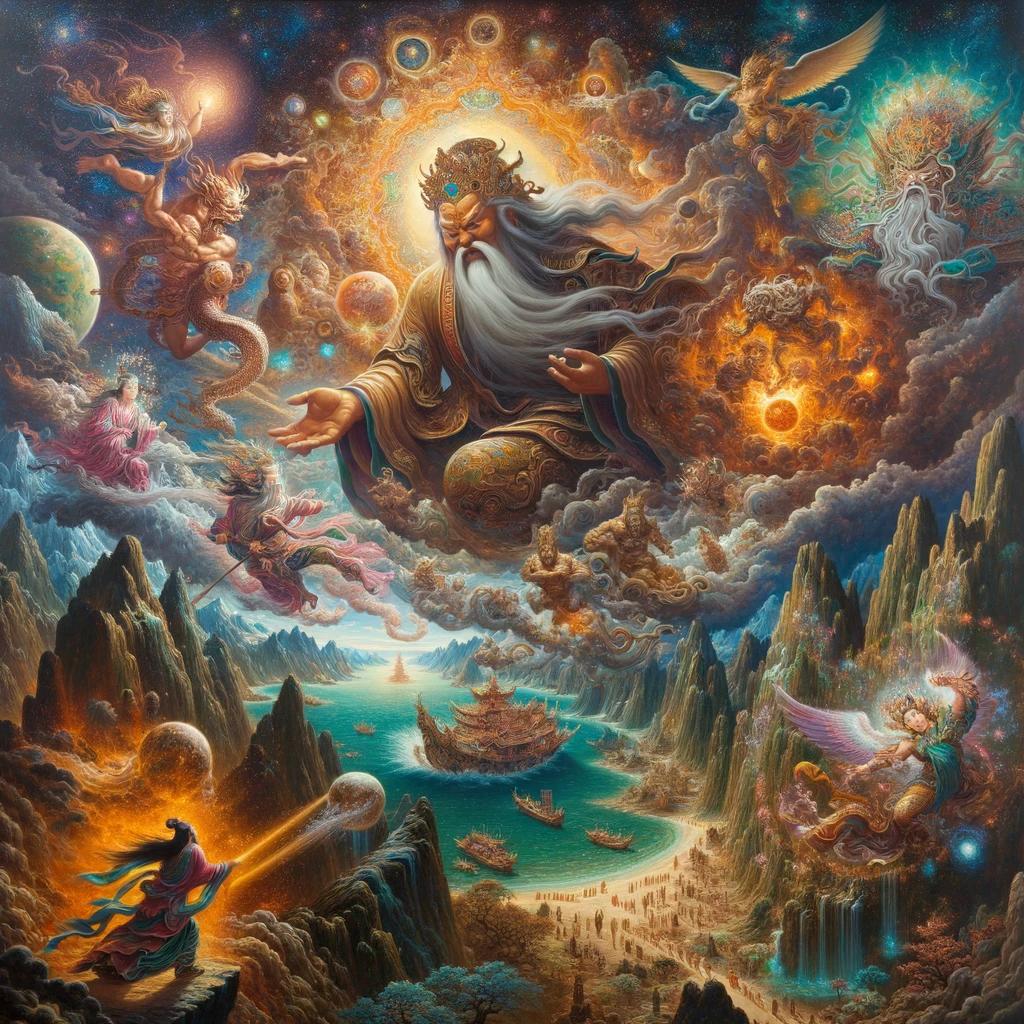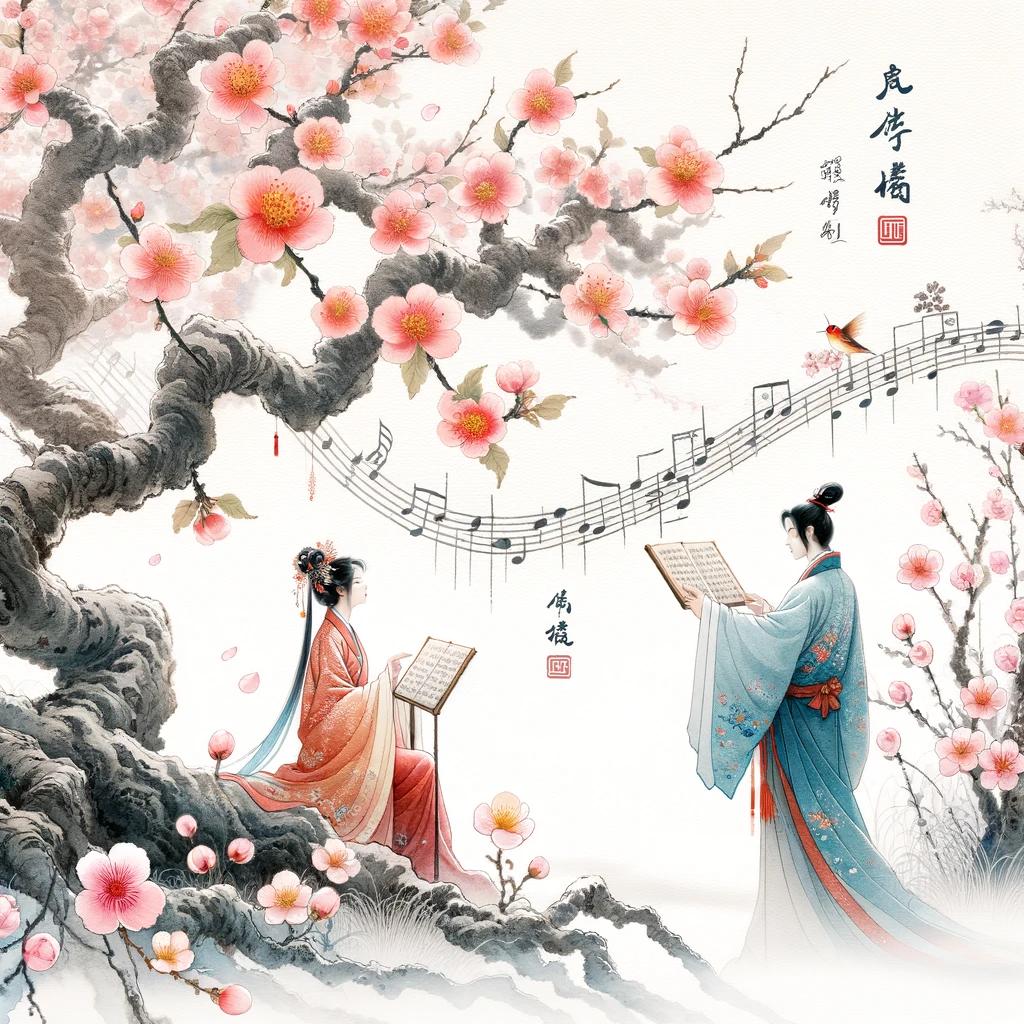Chinese Mythology Demons: Unraveling the Supernatural Creatures in Chinese Folklore
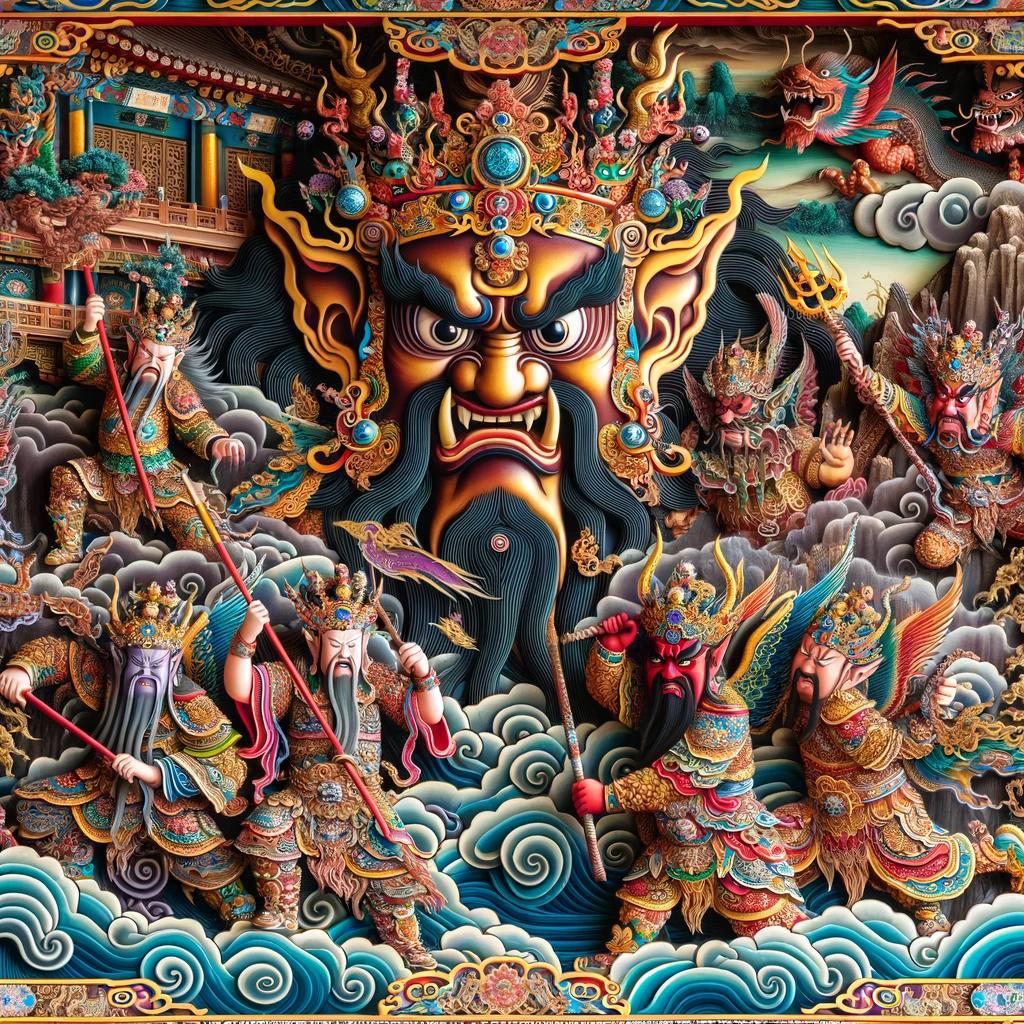
Chinese Mythology Demons are intriguing supernatural creatures deeply rooted in ancient Chinese beliefs and folklore. They exhibit unique characteristics and behaviors that have greatly influenced Chinese culture and folklore.
These mythical entities play significant roles in popular stories, legends, and creation myths, often interacting with gods and immortals. The symbolic and cultural significance of Chinese demons is evident in demon-related rituals, worship practices, and their representation of good versus evil.
Comparisons with Western demons and the cultural exchange of legendary creatures are also explored. Modern interpretations and pop culture references further showcase the enduring fascination with Chinese Mythology Demons.
Chinese Mythology Demons
In Chinese mythology, demons hold a significant place, representing various supernatural creatures with unique characteristics and origins.
Explore the intriguing world of Chinese Mythology Demons through the following subtopics.
Taotie
Taotie is a renowned demon in Chinese mythology, known for its insatiable appetite and fierce appearance. Often portrayed as a grotesque mask-like creature, Taotie symbolizes greed and gluttony. Its inclusion in ancient Chinese art and literature reflects the cultural fascination with the balance between desire and self-control.
Yaojing
In the realm of Chinese Mythology Demons, Yaojing are supernatural beings that have the ability to shape-shift into various forms. With their mischievous nature, Yaojing can bring both blessings and calamities to humans.
These creatures play an intricate role in Chinese folklore and are often depicted as tricksters or protectors.
Chinese Oni
Chinese Oni, similar to their Japanese counterparts, are fierce demonic creatures that embody chaos and malevolence. These formidable entities are often associated with natural disasters, plagues, and other calamities, symbolizing the destructive forces in the universe.
The tales of Chinese Oni have been passed down through generations, captivating audiences with their ferocity and elemental power.
Description and Origins of Chinese Mythology Demons
Chinese Mythology Demons hold a significant place in ancient Chinese beliefs and folklore. Understanding their description and origins provides fascinating insights into the rich tapestry of Chinese culture. In this section, we will explore the ancient Chinese beliefs and folklore surrounding these supernatural beings, delve into their distinguishing characteristics and behaviors, and examine their profound influence on Chinese culture and folklore.
Ancient Chinese Beliefs and Folklore
Ancient Chinese beliefs and folklore form the foundation upon which Chinese Mythology Demons are based. These mythical creatures are deeply intertwined with traditional Chinese religious practices, rituals, and spiritual beliefs.
Through ancient texts, oral traditions, and historical accounts, we gain glimpses into the complex world of demons as perceived and revered by the ancient Chinese civilization. Their presence in tales and legends further reflects the historical and cultural significance of these beings.
Characteristics and Behaviors of Demons
Chinese Mythology Demons are characterized by their unique attributes, appearances, and behaviors. They exhibit a diverse range of physical forms, ranging from grotesque and fearsome to alluring and mysterious. Their abilities and powers vary, with some demons possessing shapeshifting abilities, while others excel in specific domains, such as water, fire, or air.
Various demons are associated with specific emotions, seasons, or natural phenomena, further adding to their complexity. Understanding these distinguishing features deepens our comprehension of their roles within Chinese mythology.
Influence on Chinese Culture and Folklore
Chinese Mythology Demons have permeated Chinese culture and folklore, leaving an indelible mark on various aspects of society. Their presence can be witnessed in art, literature, and performing arts where they play prominent roles in traditional operas, paintings, and sculptures.
Chinese cultural festivals and rituals often incorporate the themes of battling demons, symbolizing the struggle between good and evil. Even in contemporary popular culture, such as films and video games, Chinese demons continue to captivate audiences and maintain their relevance in the modern era.
Chinese Mythology Demons in Popular Stories and Legends
Chinese mythology is filled with captivating stories and legends about demons that have been passed down through generations. These tales showcase the diverse range of Chinese demons and their intriguing mythological characters.
Famous Tales and Mythological Characters
Chinese folklore is replete with famous tales featuring captivating mythological characters. One such tale is ‘Journey to the West,’ where the Monkey King, Sun Wukong, encounters various demons and supernatural beings on his epic journey.
The White Snake, known for her shape-shifting abilities, and the Nine-Tailed Fox, a cunning and seductive creature, are also prominent characters in Chinese folklore.
Role of Demons in Chinese Creation Myths
Chinese creation myths often involve demons playing crucial roles.
In the myth of Pangu, a cosmic demon, he emerges from a cosmic egg to create the heavens and the earth. Other creation tales involve demons representing chaos and destruction before the world gains order and harmony.
Interactions with Gods and Immortals
Chinese demons frequently interact with gods and immortals in mythological narratives. These interactions can range from battles and conflicts to alliances and partnerships. For example, the goddess Nüwa, who is responsible for creating mankind, joins forces with the Thunder God to defeat a powerful demon threatening humanity.
As these popular stories and legends demonstrate, Chinese mythology demons are essential characters that add depth and excitement to the rich tapestry of Chinese folklore.
Symbolism and Cultural Significance of Chinese Mythology Demons
Chinese Mythology Demons hold a deep symbolic and cultural significance within ancient Chinese beliefs.
They represent a profound duality, embodying the eternal battle between good and evil. Through their representation in demon-related rituals and traditions, the significance of these supernatural beings is further emphasized.
Demon-related Rituals and Traditions
Demon-related rituals play a crucial role in Chinese culture, serving as a means to appease and ward off these malevolent creatures.
These rituals often involve elaborate ceremonies, incantations, and sacrifices to protect communities from the chaos and destruction demons can bring. The rituals highlight the collective effort to maintain harmony and order by seeking divine protection from these powerful entities.
Demon Worship and Exorcism Practices
Chinese demon worship and exorcism practices have long been observed as a way to combat the influence of demons. Temples and shrines dedicated to the worship of demons exist across China, where devotees seek their favor or attempt to drive them away through exorcism rituals.
Traditional practices such as chanting, burning incense, and performing specific gestures are employed to expel and banish demonic forces from a person or a place.
Representation of Good vs Evil in Chinese Demonology
In Chinese demonology, the concept of good versus evil is ever-present.
Demons often symbolize the darker aspects of human nature, representing greed, anger, and chaos. Their counterparts, such as gods and immortals, symbolize virtues like compassion, righteousness, and order. The battles between demons and divine beings in mythological tales serve as metaphors for the eternal struggle between these opposing forces.
Through this symbolism, Chinese mythology highlights the importance of overcoming negativity to achieve peace and prosperity.
Symbolism and cultural significance intertwine in the realm of Chinese Mythology Demons, shedding light on the intricate relationship between supernatural entities and human existence.
The rituals, worship practices, and intricate symbolism associated with these beings mirror the eternal struggle between good and evil within the Chinese cultural framework.
Comparisons with Other Mythological Creatures and Legends
Chinese Mythology Demons have long captured the imagination with their unique characteristics and intriguing stories.
Exploring their similarities and differences to Western demons sheds light on the diverse mythological traditions. Additionally, cross-cultural influences and exchanges have shaped the perception of Chinese demons in relation to other mythological creatures.
Let’s delve deeper into the realm of comparisons and legendary creatures associated with Chinese Demons.
Similarities and Differences to Western Demons
Similarities:
- Both Chinese and Western demons are often depicted as malevolent supernatural beings associated with evil and chaos.
- They both play key roles in mythological narratives, embodying the dichotomy of good versus evil.
- Both Chinese and Western demonology explore the concept of demonic possession and the ability to wreak havoc on humanity.
Differences:
- Chinese demons often possess unique physical attributes and distinctive forms, such as the Wangliang with its eerie red eyes, long ears, and beautiful hair, which differ from the more standardized depictions of Western demons.
- The cultural and philosophical contexts within Chinese and Western mythologies give rise to distinct symbolism and interpretations of demons.
- Chinese demons are deeply rooted in Taoist and Buddhist beliefs, while Western demons draw inspiration from Judeo-Christian traditions.
Cross-cultural Influences and Exchanges
Throughout history, the exchange of ideas, trade, and cultural interactions between different regions allowed for cross-cultural influences on Chinese demonology.
These influences resulted in the emergence of hybrid creatures and the fusion of mythological elements. Examples include:
Japanese Oni:
The Chinese Oni, which shares similarities with the Japanese Oni, is a result of cultural exchange between China and Japan. Both creatures are known for their monstrous appearances and their association with supernatural powers.
Tibetan Mythology:
Tibetan beliefs and folklore have influenced Chinese demonology, particularly in the Tibetan Buddhist tradition. This influence can be seen in the depiction of wrathful deities and demonic figures in Chinese mythology.
Central Asian Folklore:
Connections with Central Asian cultures, such as the Turkic and Mongolic peoples, have influenced Chinese mythology. Tales of creatures like the Lamia and the Nian demonstrate the cross-cultural exchange of mythical creatures and legends.
Legendary Creatures Associated with Chinese Demons
Within the rich tapestry of Chinese demonology, several legendary creatures stand out for their uniqueness and significance. These creatures are often intertwined with demons and serve as important mythological symbols:
Qiuniu – The Demonic Bull:
Qiuniu, a formidable demonic bull, is a symbol of brute strength and chaos in Chinese myths.
It is often associated with flooding, destruction, and natural disasters.
Shen – The Divine Beast:
Shen, the embodiment of divine powers, is a mythical creature often depicted as a lion with horns or antlers. It represents courage, protection, and the power to ward off evil spirits.
Pixiu – The Fortune Guardian:
Pixiu, a legendary winged beast, combines elements of lions and dragons. It is believed to be a powerful guardian that brings wealth, wards off evil, and protects against misfortune.
The comparisons with other mythological creatures and the association of legendary creatures within Chinese demonology contribute to the richness and diversity of Chinese folklore and cultural heritage.
Modern Interpretations and Pop Culture References
Chinese Mythology Demons have experienced a resurgence in modern times, captivating audiences through various forms of media and entertainment. Their intriguing nature and rich symbolism have inspired numerous artistic depictions and have become a source of inspiration for literature, art, movies, TV shows, and video games.
Depiction of Chinese Demons in Literature and Art
Literature and art have provided a platform to explore the captivating world of Chinese Mythology Demons. Many authors and artists have delved into their intriguing characteristics, creating compelling narratives and stunning illustrations.
Through vivid storytelling and intricate artwork, these representations often capture the essence of Chinese demons, showcasing their grotesque appearances and mythical qualities.
Influence on Contemporary Movies, TV Shows, and Video Games
The influence of Chinese Mythology Demons can be seen in the realm of contemporary entertainment.
Movies, TV shows, and video games frequently draw inspiration from these supernatural creatures, incorporating their legends and symbolism into captivating storylines. From epic battles between good and evil to mystical powers and visual effects, Chinese demons have become a popular theme in the world of cinematic and interactive storytelling.
Contemporary Beliefs and Practices Regarding Chinese Demons
Despite their mythical origins, Chinese Mythology Demons continue to have an impact on contemporary beliefs and practices. Some individuals still hold traditional beliefs and engage in demon worship, exorcism practices, and rituals aimed at appeasing or warding off these supernatural beings.
Additionally, the influence of Chinese demons extends beyond religious and cultural contexts, becoming part of modern superstitions and urban legends.
.

